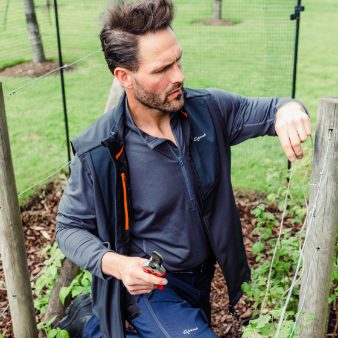To-Dos in March

Seed Sowing
Try to hold your nerve and commence seed sowing freely towards the end of this month. Yes, you could start them earlier but do you have the space or have you got the time to repot them as they get bigger and bigger? Don’t forget, they’ll need to be hardened off and planted out after the last chance of frost has passed so it’s better to be looking at a six or seven week period from sowing to planting out. Smaller pots also enable them to be squeezed into smaller spaces as the garden by mid May will be swelling rapidly and less and less planting space will be available.
Necessary Cutbacks
With new growth just starting to show, now is the ideal time to be cutting back the dead growth on grasses such as Stipa or Miscanthus - they can be cut right down to the ground. Some grasses such as Festuca or Hakonechloa can have the dead material ‘combed’ out with your fingers.
Forcing Rhubarb
The job of forcing rhubarb is one that is often misunderstood. It’s an operation carried out to produce earlier, more tender, ‘sticks’. Clumps of rhubarb are covered with an old chimney pot, a large plant pot, or a purpose made ‘forcer’. In years gone by, fresh horse manure was ridged up around the forcer to create heat and in turn produce an even earlier crop. The idea is to exclude light and encourage the stems to reach upwards in their hunt for daylight in which to photosynthsise. This elongation known as etiolation, combined with rapid growth produces long, pale, tender, and sweeter sticks. It does however exhaust the plant so once a crop has been taken - and this is the important bit - the forcer needs to be removed and the plant left untouched for the rest of the year. If you grow several plants later pickings can be taken from the unforced specimens.
Mower
If you haven’t done so already check that your mowers are operational and consider giving your lawn a cut. Don’t cut too low yet but in doing so you’ll not only produce those lovely stripes but also remove any remaining debris such as fallen leaves and twigs that have remained overwinter on the lawn. Clip the edges too and the whole garden will appear rejuvenated.
Spuds you Like
Towards the end of this month we can think about planting potatoes. First earlies can go in, with second earlies and maincrops going in up to the end of April. As with many tender vegetables there is a trade off. In a mild year an early planted batch will reward us with a crop after as little as ten weeks. That's only assuming we manage to avoid frosts and keep them covered when dangers of cold weather are reported. In a home garden situation it's very easy to react to an adverse weather report quickly. If you have an allotment that is remote from your house then it’s easy to forget, accidentally missing the warnings and returning to a devastated crop. Many will slowly recover but it can be a big setback. Frosts can hit as late as early May in the UK.







